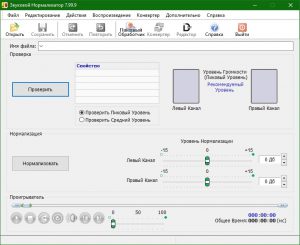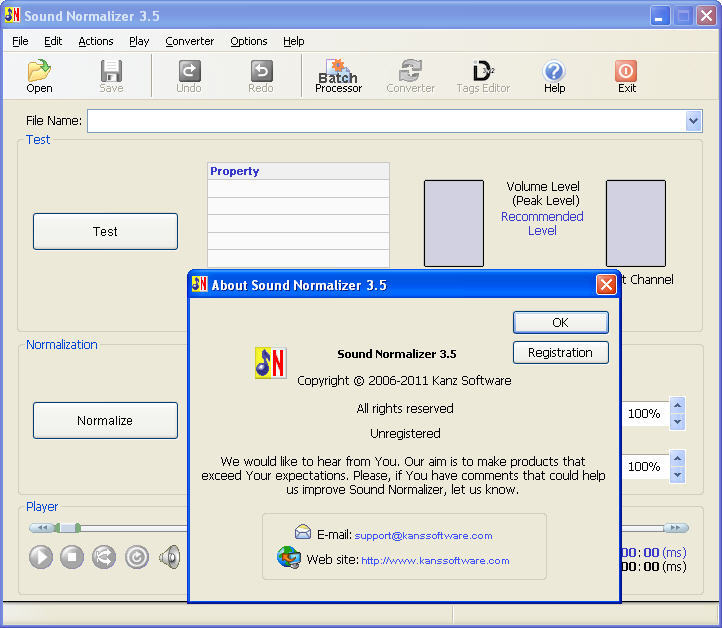

- Batch process sound normalizer software install#
- Batch process sound normalizer software download#
- Batch process sound normalizer software windows#
If no output file name is specified for an input file, the output files o OUTPUT, -output OUTPUT : Output file names. If you want to use such containers and/or keep the file size down, use -c:a and specify an audio codec (e.g., -c:a aac for ffmpeg's built-in AAC encoder). Some containers (like MP4) also cannot handle PCM audio. This will result in a much higher bitrate than you might want, for example if your input files are MP3s. The default audio encoding method is uncompressed PCM ( pcm_s16le) to avoid introducing compression artifacts. This ensures that multiple files normalized with this filter will have the same perceived loudness. It will bring the audio to a specified target level. The normalization will be performed with the loudnorm filter from FFmpeg, which was originally written by Kyle Swanson. The video and subtitle tracks will be copied over to the output file. For example, if your input is a video with two language tracks and a subtitle track, both audio tracks will be normalized independently. ext m4a.īy default, all streams from the input file will be written to the output file. Using the -ext option, you can supply a different output extension common to all output files, e.g. If you don't specify the output file name for an input file, the container format will be MKV, and the output will be written to normalized/.mkv. In this case, the container format (e.g.wav) will be inferred from the file name extension that you've given.Įxample: ffmpeg-normalize 1.wav 2.wav -o 1n.wav 2n.wav You can specify one output file name for each input file with the -o option. Just give the program one or more input files as arguments. All audio streams will be normalized so that they have the same (perceived) volume. The program takes one or more input files and, by default, writes them to a folder called normalized, using an. Please read this section for a high level introduction. Usage ffmpeg-normalize input ] Įxample: ffmpeg-normalize 1.wav 2.wav -o 1-normalized.m4a 2-normalized.m4a -c:a aac -b:a 192kįor more information on the options ( ) available, run ffmpeg-normalize -h, or read on. WARNING: The chosen output extension mp3 does not support video/cover art. Goblin.mp3" -f -c:a libmp3lame -b:a 320k -target-level -13 -output "01. Note: The container will run in interactive mode.Įxample Usage: PS C:\yonkers> docker run -v "$(pwd):/tmp" -it ffmpeg-normalize /bin/sh This will mount your current folder to the /tmp directory inside the container
Batch process sound normalizer software windows#
Run using Windows Powershell or Linux: docker run -v "$(pwd):/tmp" -it ffmpeg-normalize /bin/sh Docker Buildĭownload this repository and run docker build -t ffmpeg-normalize.
Batch process sound normalizer software download#
Or download this repository, then run pip3 install.
Batch process sound normalizer software install#
Installationįor Python 3 and pip: pip3 install ffmpeg-normalize Note that using distribution packages (e.g., apt install ffmpeg) is not recommended, as these are often outdated.

Sudo chmod +x /usr/local/bin/ffmpeg /usr/local/bin/ffprobeįor macOS and Linux, you can also use Homebrew: brew install ffmpeg



 0 kommentar(er)
0 kommentar(er)
